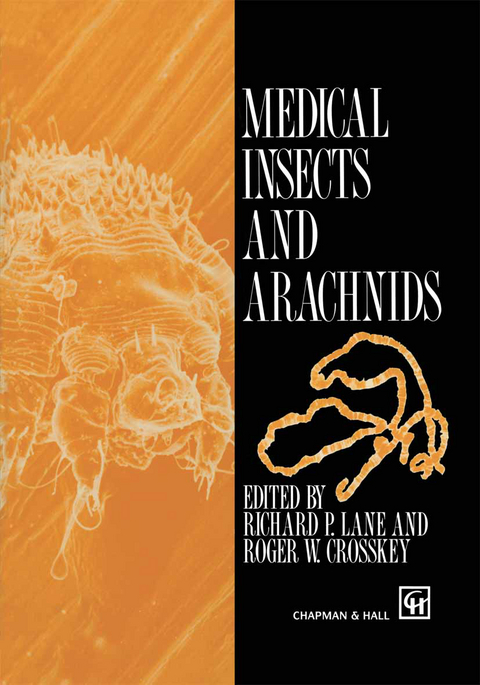
Medical Insects and Arachnids
Springer (Verlag)
978-94-010-4679-4 (ISBN)
1 General introduction.- 2 Introduction to the arthropods.- One Diptera.- 3 Introduction to the Diptera.- 4 Sandflies (Phlebotominae).- 5 Mosquitoes (Culicidae).- 6 Blackflies (Simuliidae).- 7 Biting midges (Ceratopogonidae).- 8 Horse-flies, deer-flies and clegs (Tabanidae).- 9 Tsetse-flies (Glossinidae).- 10 Stable-flies and horn-flies (bloodsucking Muscidae).- 11 House-flies, blow-flies and their allies (calyptrate Diptera).- 12 Diptera causing myiasis in man.- Two Other insects.- 13 Cockroaches (Blattaria).- 14 Bedbugs and kissing-bugs (bloodsucking Hemiptera).- 15 Lice (Anoplura).- 16 Fleas (Siphonaptera).- 17 Insects of minor medical importance.- Three Arachnids.- 18 Ticks and mites (Acari).- 19 Spiders and scorpions (Araneae and Scorpiones).- Scientific names index.
They [the editors] have succeeded admirably in attaining their goal...The book is accurate and authoritative - Insecta Mundi; One of the most informative and valuable references on medical entomology ever published ... Illustrations are copious, of a very high quality and well reproduced. This is an essential medical entomology reference and will soon become a classic in the tradition of its predecessors - Biologist; This book provides a fully comprehensive introduction to the insects and other arthropods which affect human health. - Review of Medical and Vetinary Biology; A pool of biosystematic information well worth plumbing. With its abundance of illustrations (more than 700 drawings, photographs, and maps) and emphasis on easily discernable morphological features, this book should be especially welcome in university teaching laboratories. - Journal of the American Mosquito Control Association; The book is richly illustrated; particularly many line drawings and SEM micrographs show taxonomically important structures. User friendly features of the book include full labelling (instead of confusing abbreviations) of all figures and simple, clear identification keys avoiding technical terms that non specialized readers might not be familiar with. - Aquatic Insects; The text and keys are well illustrated, many of the drawings coming from previous Natural History Museum publications and all of them are of a high standard. - Annals of Tropical Medicine and Parasitology; All medically important insects and arachnids are dealt with in an organised way which shows tight editing and an unusual degree of discipline and compliance by contributors. This is the best book available on the subject. It should be used not just by entomologists, but by all workers and teachers involved with vector-borne diseases. It is well-written, authoritative and full of `gems', the best of which concerns spiders - Parasitology Today; I had been fortunate enough to use a library copy of this excellent text-book for some time before being asked to review it. It has consistently met and surpassed my expectations... It can simply be described as a must-have book, suitable for student to expert alike - Transactions of the Royal Society of Tropical Medicine and Hygiene 89
| Zusatzinfo | XV, 723 p. |
|---|---|
| Verlagsort | Dordrecht |
| Sprache | englisch |
| Maße | 178 x 254 mm |
| Themenwelt | Naturwissenschaften ► Biologie ► Evolution |
| Naturwissenschaften ► Biologie ► Zoologie | |
| ISBN-10 | 94-010-4679-4 / 9401046794 |
| ISBN-13 | 978-94-010-4679-4 / 9789401046794 |
| Zustand | Neuware |
| Haben Sie eine Frage zum Produkt? |
aus dem Bereich


